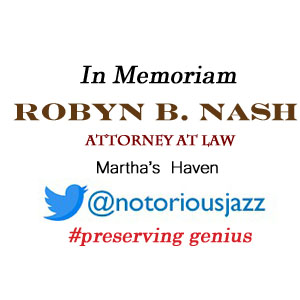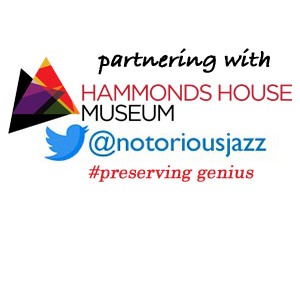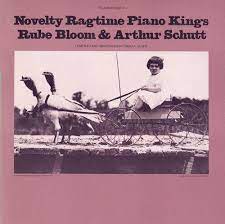
Daily Dose Of Jazz…
Reuben Bloom was born April 24, 1902 in New York City, New York to Jewish parents. During the 1920s he wrote many novelty piano solos, recorded for the Aeolian Company’s Duo-Art reproducing piano system various titles including his Spring Fever. His first hit came in 1927 with Soliloquy; his last was Here’s to My Lady in 1952, which he wrote with Johnny Mercer. In 1928, he made a number of records with Joe Venuti’s Blue Four for OKeh, including five songs he sang, as well as played piano.
He formed and led a number of bands during his career, most notably Rube Bloom and His Bayou Boys, which recorded three records in 1930. The Bayou Boys consisted of Benny Goodman, Adrian Rollini, Tommy Dorsey, Mannie Klein and Frankie Trumbauer in the Sioux City Six.
His I Can’t Face the Music, Day In Day Out, Fools Rush In (Where Angels Fear To Tread) and Give Me The Simple Life has become a part of the Great American Songbook and jazz standards.
During his career, he worked with many well-known performers, including those mentioned above and Ruth Etting, Stan Kenton, Jimmy Dorsey and collaborated with a wide number of lyricists, such as Ted Koehler, and Mitchell Parish.
Pianist, arranger, bandleader, recording artist, vocalist, and author Rube Bloom published several books on piano method before he transitioned on March 30, 1976 in his home city.
More Posts: arranger,author,bandleader,composer,history,instrumental,jazz,music,piano,vocal

Daily Dose Of Jazz…
Alun Morgan was born on February 24, 1928 in Pontypridd, Wales and became interested in jazz as a teenager during World War II. Charlie Parker was a significant influence on him in the late 1940s.
Morgan began to write on jazz from the early 1950 for Melody Maker, Jazz Journal, Jazz Monthly and Gramophone, and for 20 years from 1969 a weekly jazz column in a local Kent newspaper.
Over his writing career he completed liner notes for over 2,500 albums, initially for Vogue Records. From 1954 he contributed to music programs for BBC Radio. Morgan was the author of a book on modern jazz in England and the co-author of several books on jazz records. They were Jazz On Record: A Critical Guide, Jazz On Record: A Critical Guide To The First 50 years, Modern Jazz-The Essential Records, Modern Jazz – A Survey Of Developments Since 1939, Count Basie, and The Gramophone Jazz Good CD Guide.
He lectured on jazz at the Guildhall School of Music and Drama and the Royal Academy of Music in London, England. Additionally, he was a full-time architect until 1991.
Shortly after retiring from his other occupation, he emigrated to Australia to live out his life. Author and critic Alun Morgan transitioned on November 11, 2018.
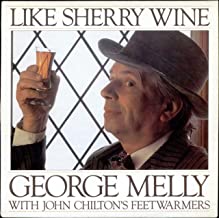
Daily Dose Of Jazz…
John James Chilton was born on July 16, 1932 in London, England to working-class parents and was evacuated to Northamptonshire, where he began playing the cornet at the age of 12. Switching to trumpet at 17, after doing two years in the RAF, in 1952 he formed his own jazz band.
He worked in Bruce Turner’s Jump Band from 1958 to 1963 which also had a film of their exploits called Living Jazz in 1961. He went on to play in Alex Welsh’s Big Band. During the 1960s he played piano on some pop recordings, worked in Mike Daniels’ Big Band. He formed his own Swing Kings band which backed touring American jazz musicians including Buck Clayton, Ben Webster, Bill Coleman and Charlie Shavers. He also recorded The Song of a Road, one of the radio ballads by folk singers Ewan MacColl and Peggy Seeger in the 1950s for the BBC.
He would go on to work with cartoonist Wally Fawkes, form John Chilton’s Feetwarmers, and began accompanying jazz singer George Melly. Together they made records and toured the world for nearly 30 years. In 1983 and 1984 they had their own BBC television series called Good Time George, and appeared on countless other TV shows.
A songwriter and composer, one of his songs, “Give Her A Little Drop More”, was used in the film St Elmo’s Fire. John is one of the few European writers to win a Grammy Award for his album notes on Bunny Berigan and was nominated again in 2000. He won the British Jazz Award for Writer of the Year, his Who’s Who of Jazz was described as one of the essential jazz books, and he wrote award winning books on Coleman Hawkins, Louis Jordan Sidney Bechet and Louis Armstrong. Trumpeter John Chilton continued to play trumpet with the clarinetist Wally Fawkes in London until he passed away on February 25, 2016 in London.
More Posts: author,bandleader,history,instrumental,jazz,music,trumpet

Daily Dose Of Jazz…
Chuck Anderson was born in Chicago, Illinois on June 21, 1947. He began guitar lessons at the age of 14 and by 1963, he was teaching guitar and playing in a band.
At the age of 19, he began studies with Dennis Sandole, who was notable for his association with John Coltrane, James Moody, Michael Brecker, Pat Martino and Jim Hall.
In 1969, Anderson was offered the staff guitar job at the Latin Casino in Cherry Hill, New Jersey. The Latin was a popular venue before gambling came to Atlantic City. During that period, he accompanied and performed with Bobby Darin, Billy Eckstine, and Peggy Lee, playing fourteen shows a week.
By 1973 Chuck had returned to jazz and formed the Chuck Anderson Trio with Al Stauffer on bass and Ray Deeley on drums. Four years later, he was the staff guitar job at Valley Forge Music Fair in Devon, Pennsylvania.
During the years leading up to the Eighties he worked with Nancy Wilson, Michel LeGrand, and Anthony Newley. In the years that followed, he concentrated on teaching, composing, and session work.
He has written a column, The Art and Science of Jazz, for the web magazine All About Jazz. Guitarist, educator, composer, and author Chuck Anderson continues his career in music.
More Posts: author,composer,educator,guitar,history,instrumental,jazz,music

Daily Dose Of Jazz…
Fred Ramsey was born Charles Frederic Ramsey, Jr. on January 29, 1915 in Pittsburgh, Pennsylvania and received his BA at Princeton University in 1936. After graduation he took jobs at Harcourt Brace until 1939, the United States Department of Agriculture from 1941 to 1942, and then with Voice of America.
In 1939 with Charles Edward Smith, he wrote Jazzmen, an early landmark of jazz scholarship particularly noted for its treatment of the life of King Oliver. After receiving Guggenheim fellowships, Fred visited the American South in the middle of the 1950s to make field recordings and do interviews with rural musicians, some of which were used in releases by Folkways Records and in a 1957 documentary, Music of the South.
He curated an anthology of early jazz recordings for Folkways, titled simply Jazz. Ramsey worked with the Institute of Jazz Studies at Rutgers University from 1970. He researched Buddy Bolden’s life with a grant from the National Endowment for the Humanities in 1974–75 and continued with a Ford Foundation grant in 1975–76. He presented early jazz interviews on National Public Radio in 1987.
Writer and record producer Fred Ramsey, who authored six books on jazz, passed away on March 18, 1995 in Paterson, New Jersey.
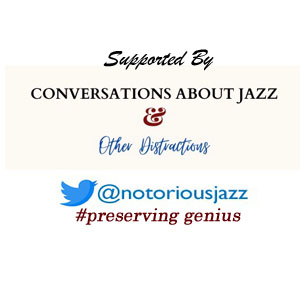
More Posts: author,history,intrumental,jazz,music,record producer


